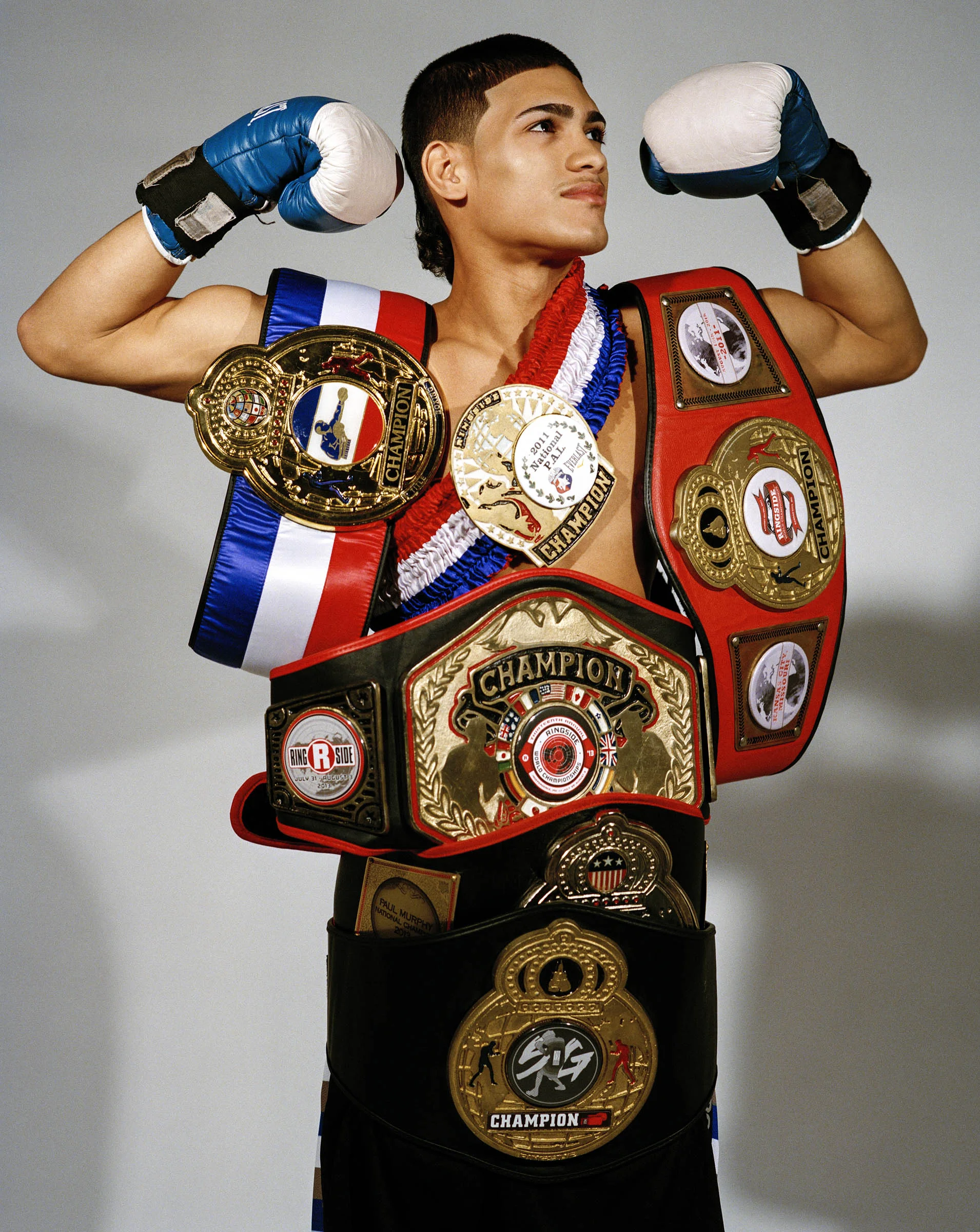Dan Rushton
Rushton is a Canadian born artist who has been living and painting in New York City for over 15 years. His work has been shown in galleries and art fairs across the US, Canada, and Europe. He's been nominated by Art Review Magazine as one of the top 25 upcoming artists to watch and was featured in the November 2013 issue of Modern Painters Magazine, focusing on contemporary artists using innovative processes.
Rushton's painting method begins by sketching directly onto a computer by drawing on a tablet with a digital pen. This drawing is then scaled up and redrawn onto large sheets of gessoed paper by an industrial machine called a plotter that has been altered to hold graffiti markers. While appearing to be merely simple marks, the painted lines in these works are a complicated accumulation of processes that involve a constant interplay of the human hand, mechanical technologies, and digital technologies. The interactions of these combined processes are designed to reflect the complexity and mystery of our own experience. By employing the detached posturing of Pop Art while simultaneously engaging the rich history of figurative painting.
Dennis: Take us through the technique involved in creating your present works such as 15 Self Portraits and Dave?
Dan: My painting method begins by sketching directly onto a computer by drawing with a digital pen on a tablet. This digital drawing is then scaled up and redrawn onto large sheets of gessoed paper by an industrial machine called a plotter that has been altered to hold graffiti markers. The result is what appears to be a simple graphic line that is actually a complicated accumulation of processes involving the interplay of the human hand, mechanical technologies, and digital technologies.
As a painter, your hands have been your primary tools for creating art. What lead you to make use of the computer and tablet?
My hands are still the primary tools for making these paintings. There is a considerable amount of hands-on work involved including doing the original drawing, gessoing the paper, and pasting down the paper after the final drawing has been painted by the plotter. Keeping the plotter working takes a lot of mechanical handy-work as well. The computer and the plotter in a sense restrain the painted marks from being connected directly to my hand and therefore emphasizing process over touch but the paintings still very much have a hands-on physicality to them.
Graffiti art has acquired quite the following. What are your views on the medium and what would your tag be?
Tagging had a big influence on me when I moved to NY. The saturation of the pigments in the materials used for tagging is very appealing. The black ink I am using now is a synthetic tar which is a rich black that is very thick and sticky. You wouldn’t find ink with those qualities at an art supply store. I don’t know what my tag would be. Maybe “Trace”??
Your paintings such as winter happy winter sad and realities feel soft and soothing to the eye, yet underneath the draping (the inner workings) are hard objects such as motorcycle mufflers and gas tanks. You have said there is a story being told in each of these paintings. What is the story behind Alter of the lupine lords?
Rushton - I played dungeons and dragons a lot as a kid and that title is from a riddle in one of the adventures. The answer to the riddle was “the Moon.” That is what “the alter of the lupine lords” is. That painting had a very nocturnal feel and a kind of mysterious pent up sexual energy I associate with being a teenager. The title just seemed to fit. It sounds so serious but really it was a little fun and silly.
Who are some of the artists that inspire you?
One of the last great shows I saw was Katherine Bernhardt at Canada Gallery. Artists like Thomas Houseago, Christopher Wool, and Joyce Pensato have been inspirational for me.
Your earlier works are done in acrylic of landscapes, forms and flowers have been described as worlds poised between life and death, stillness and decay. How would you describe your work of today?
Being “poised between life and death” is hard to escape and still part of what I am after. Now I am more focused on free will and our struggle for self-realization.
What advice would you give to aspiring artists?
It is good to be involved and see as much as you can but when you are in your studio just follow your own ideas and try not to be overly influenced by what is going on around you. The world moves very quickly. Just be patient and let the world come around to you.















